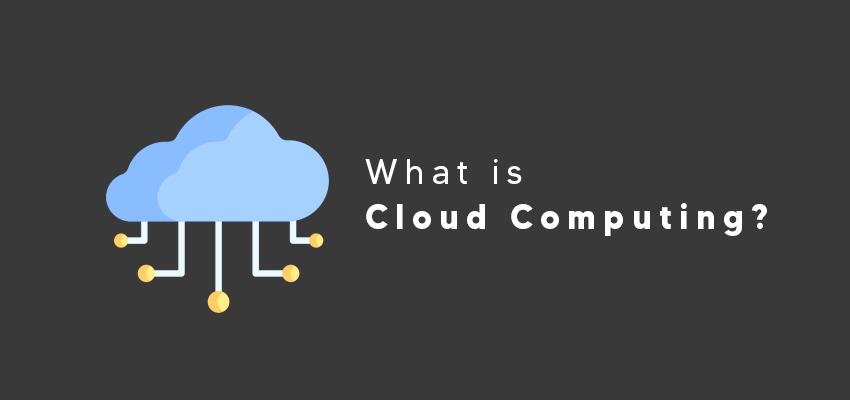
What is Cloud Computing?
Posted Oct. 16, 2020, 7:21 a.m. by Emil S.If you check files on Google Drive, order stuff on Amazon, or play games online, you're definitely in the loop of cloud computing. It's an exciting system shaping the way we learn and do business in the modern world. Many companies render services over the internet by using resources that include both software and hardware that an internet company provides and manages.
This form of computing is called Cloud computing. Server computer networks are used to run advanced applications for companies that offer services online. Cloud computing services are most widely requested for business purposes. Still, they are also common for education and research, especially when these services are required for a broad audience at a particular time.
The services have different types and models, and service providers offer both free and paid cloud services. Cloud computing services that providers make available include:
Types of Cloud Computing
- Software Application: The software industry is massive. Service providers may build custom applications for users or create software for multiple users on a commercial scale.
- Network Storage: Service providers store data for users of different locations over the internet, in a system that ensures the security and easy access to such data.
- Virtual IT: Cloud computing service providers control and manage servers remotely as an external network for local IT companies.
Cloud Computing Models
- Software-As-A-Service Models (SaaS) - SaaS computing model refers to your online graphics, CRM, email programs, etc. that run on a browser. Think about Hubspot, Yahoo, or Photopea. These apps don't need to create a file on your computers before they run. You don't have to download Photopea, but you have to download Photoshop to use it. Your browser is all that is required to use the platforms.
- Platform-as-a-Service Models (PaaS) - PaaS service providers offer remote servers, advanced applications, tools, networking, and storage to developers to build SaaS services. The business model is a business-to-business system that connects the hardware to the software users of SaaS users who take the various services on. PaaS refers to providing the middleware, Operating System, database, etc.
- Infrastructure-as-a-Service Models (IaaS) - The IaaS model is the most demanding in terms of technicality and financing. It deals with the physical components, storage devices, etc., that make PaaS and SaaS services possible. IaaS provides the server and network parts that platforms need to create the middleware and other services for the SaaS on a B2B level.
How Does It Work?
Cloud services are provided over the internet, so businesses must be online to benefit from the services. Services are managed as an extension to local company networks. The services are not mainly dependent on local storage.
The growth of cloud computing reduces how much we depend on local storage. It has three models that work together to provide end-users' services: IaaS, PaaS, and SaaS. IaaS provides the server, network, and storage components, PaaS provides the platform for the database and middleware for SaaS, which provides the interface that users interact with.
Companies that provide cloud services secure their program files on the internet. In the local computing system, however, each user has to download and install each file manually.
The files are downloaded and installed manually for use by each user’s computer.
Pros of Cloud Computing
Cloud services are becoming quite popular, especially in the last two decades. The services provided come on-the-go, and users only need access to an internet browser and don't have to move about with their devices. Cloud computing makes data management flexible.
It can allow integration between a company's services with another. For instance, integrating Mailchimp services with a CRM like WordPress. Platforms that provide these kinds of services delegate the responsibility to the cloud company. The company will focus on securing it from attack and providing the needed technicality for running them, which is excellent to encourage the manager's concentration on the services.
Cons of Cloud Computing
Cloud services' downtime can be costly if businesses are entirely online. Still, we can quickly dispel the serious doubt that this raises if we consider the increasing attention companies give to improve online experience quality. If the cloud computing company fails, and the system is compromised, the platform may lose important files and personal details to attackers.
Also, companies may have less control over their data as some cloud companies manage them.
In conclusion, cloud services are increasingly gaining acceptance for businesses worldwide. They form the basis for some of the world's most valuable companies today like Amazon, Microsoft, Alibaba, Facebook, Paypal, and others.
However, these companies' owners range from actual web programmers to those who don't know the essential things in computer programming. The cloud computing system helps companies and end-users bridge the technical hurdles and access services that would otherwise be too expensive, complex, and inefficient.
